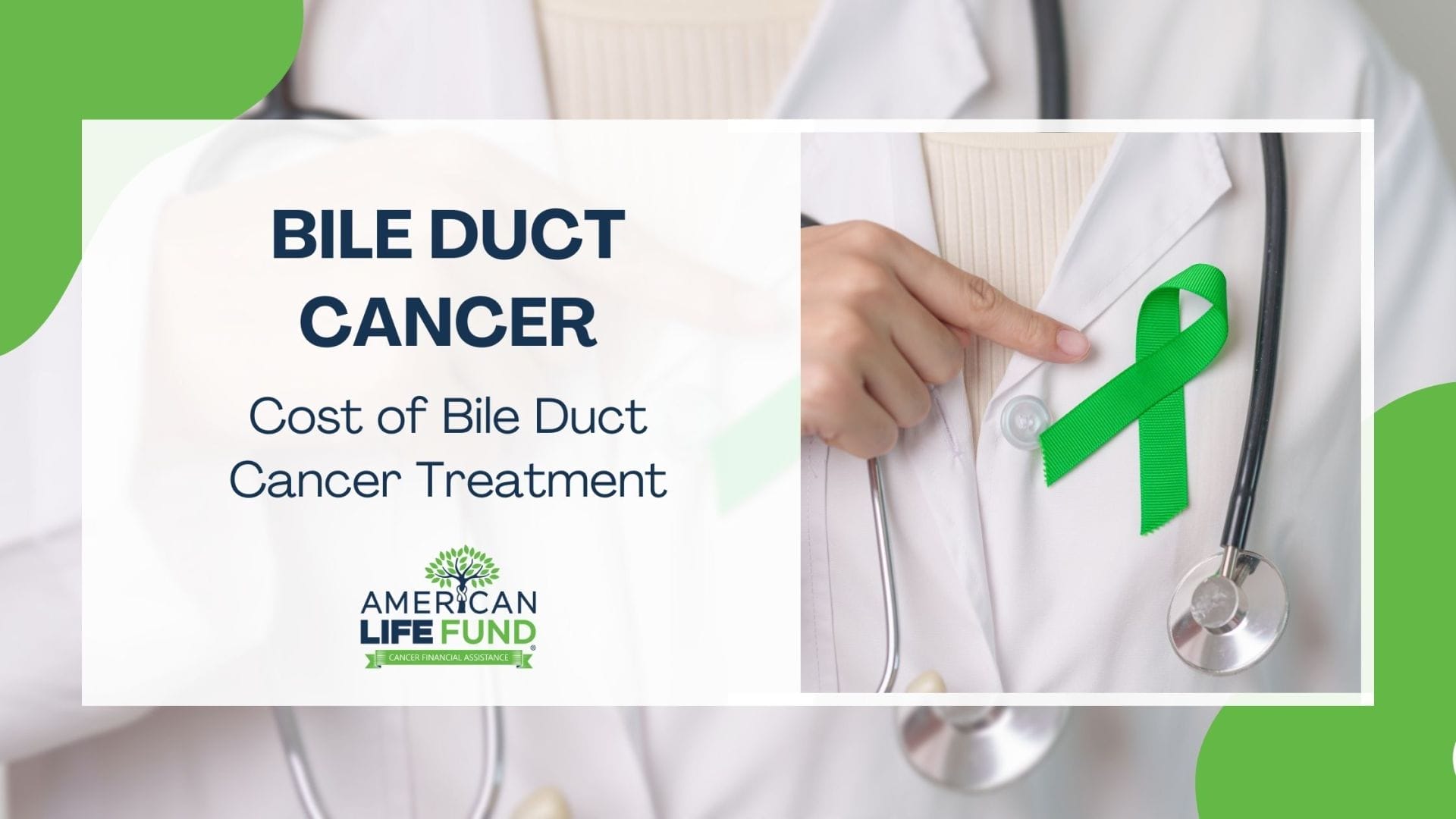Bile duct cancer, or cholangiocarcinoma, often leads to different treatment costs depending on the cancer’s stage. Initially, costs may be lower, involving straightforward surgeries. However, as the cancer advances, treatments become more complex and expensive, demanding major surgeries, innovative drug therapies, or participation in clinical trials. For those managing this disease, it’s necessary to consider all potential costs, not just medical bills but also indirect expenses like lost wages from missing work, travel expenses for specialized treatment, and the costs of ongoing care.
To manage these costs effectively, patients should review their insurance coverage to understand what treatments are covered. They should also ask about clinical trials, which may offer access to treatments at a reduced cost or for free.
Additionally, patient assistance programs can significantly reduce medication and treatment expenses. Consulting a financial counselor who specializes in cancer care can provide essential guidance, helping to navigate both immediate and long-term financial aspects.
Below, we will discuss how much treating bile duct cancer usually costs. We’ll also explain important procedures, surgeries, and treatment methods.

Understanding the Cost of Bile Duct Cancer Treatment
Bile duct cancers present a complex journey that involves not only medical considerations but also financial ones. This section aims to provide a detailed exploration of the cost factors associated with bile duct cancer treatment, focusing on the stages of the disease, various treatment options, and the crucial role insurance coverage plays in mitigating costs.
Stages of Bile Duct Cancer and Their Impact on Costs
Early Stages:
In the initial stages of bile duct cancer, when the disease is localized, treatment costs may be comparatively lower. Surgical interventions like bile duct resection or liver resection are often effective, and the financial impact tends to be more manageable.
Advanced Stages:
As a bile ducts cancer progresses, particularly in advanced stages, the complexity of treatment increases. Invasive surgical procedures, targeted therapies, and ongoing clinical trials become more common, contributing to escalated healthcare expenses.
Metastatic Bile Duct Cancer:
When a bile ducts cancer metastasizes, requiring systemic treatments, the costs associated with medications and supportive care may significantly rise. Understanding the financial implications becomes crucial for patients and their families.
Types of Treatments and Their Costs
Surgical Interventions:
- Bile Duct Resection: This surgical procedure involves removing the affected portion of the bile duct. Costs encompass pre-operative assessments, the bile duct cancer surgery itself, and post-operative care.
- Liver Resection and Transplantation: More extensive surgeries, such as liver resection or transplantation, carry substantial costs, including evaluations, surgery, and follow-up care.
- Whipple Procedure: For specific cases, like those involving the pancreas, the Whipple procedure may be recommended, with associated costs to consider.
Therapeutic Approaches:
- Targeted Therapy: While promising, targeted therapies may contribute to healthcare costs. Patients need to be aware of potential financial implications.
- Clinical Trials: Exploring innovative treatments through clinical trials may involve additional healthcare costs, necessitating careful consideration.
Insurance Coverage and Its Role in Treatment Costs
Coverage for Surgical Procedures:
Insurance coverage often plays a significant role in mitigating the costs of surgical interventions. Patients should be well-informed about their policy’s extent and limitations regarding these procedures.
Financial Assistance for Therapies:
Some insurance plans provide coverage for specific therapies, including targeted treatments. Understanding the scope of coverage helps patients plan for potential out-of-pocket expenses.
Clinical Trial Expenses:
Insurance coverage for clinical trial participation varies. Patients must discuss potential costs and coverage details with their insurance providers before committing to a trial.
In navigating the costs associated with bile duct cancer treatment, a comprehensive understanding of the disease’s stages, the expenses related to various treatments, and the role of insurance coverage is crucial. This knowledge empowers patients to make informed decisions, ensuring their medical and financial well-being on this challenging journey.
Direct and Indirect Expenses in Bile Duct Cancer Treatment
Navigating the landscape of bile duct cancer treatment involves medical considerations and understanding the direct and indirect expenses associated with the various aspects of care. This section delves into the specific categories of these costs, exploring the direct medical expenses and the often-overlooked indirect expenses that impact the overall financial burden.
Direct Medical Costs
Surgical Procedures:
- Bile Duct Resection: The costs associated with this surgical intervention include pre-operative assessments, the bile duct cancer surgery itself, and post-operative care.
- Liver Resection and Transplantation: More extensive procedures come with substantial costs, covering evaluations, the surgical process, and subsequent medical care.
- Whipple Procedure: For cases involving the pancreas, this specialized bile duct surgery incurs specific expenses that patients should be aware of.
Therapeutic Approaches:
- Targeted Therapy: While promising in treating cancer, targeted therapies may contribute to direct medical costs. Patients should consider potential financial implications and discuss these with their healthcare providers.
- Clinical Trials: Participation in clinical trials, while valuable, may involve additional medical expenses, including tests, treatments, and follow-up care.
Diagnostic Imaging Tests:
- Magnetic Resonance Imaging (MRI): Essential for cancer diagnosis and treatment planning, diagnostic tests contribute to direct medical costs. Patients should understand the financial implications of these crucial assessments.
Indirect Expenses
Lost Productivity and Wages:
- The treatment journey often involves time away from work for patients and their caregivers. Understanding the potential impact on income and productivity is crucial for financial planning.
Travel and Accommodation:
- Seeking specialized treatment may require travel, leading to additional expenses such as transportation and accommodation. These indirect costs should be factored into the overall financial considerations.
Psychosocial Support:
- Emotional well-being is integral to the overall health of cancer patients. Costs related to seeking psychosocial support, including counseling and support groups, are indirect yet important aspects of the overall financial burden.
Home Care and Assistance:
- In advanced stages, patients may require additional assistance at home. Understanding the costs of hiring caregivers or modifying living spaces is essential for comprehensive financial planning.
Mitigating Financial Strain
Insurance Coverage:
- Understanding the extent of insurance coverage for surgical procedures, therapies, and clinical trials is vital. Patients should be aware of policy limitations and potential out-of-pocket expenses.
Financial Assistance Programs:
- Exploring available financial assistance programs can help alleviate the burden of medical costs. Many organizations provide support for cancer patients facing financial challenges.
Workplace Support:
- Patients should communicate with their employers about potential accommodations during treatment to mitigate the impact on productivity and income.
The direct and indirect expenses associated with bile duct cancer treatment necessitate careful consideration. By understanding the medical costs, including surgical interventions and therapeutic approaches, and the indirect expenses impacting daily life, patients can make informed decisions and better navigate the financial aspects of their cancer journey.
Financial Assistance Options for Bile Duct Cancer Patients
Facing the financial challenges associated with bile duct cancer treatment can be overwhelming. Fortunately, various avenues of support exist to help alleviate the burden. In this section, we will explore three primary categories of financial assistance options: government programs, nonprofit organizations, and advocacy groups, as well as opportunities within clinical trials.
Government Programs
Medicare and Medicaid:
- For eligible individuals, Medicare and Medicaid can cover medical expenses related to bile duct cancer treatment. Understanding the specific criteria and coverage limitations is crucial for accessing these government-sponsored healthcare programs.
Social Security Disability Insurance (SSDI) and Supplemental Security Income (SSI):
- Bile duct cancer patients facing disability may qualify for SSDI or SSI benefits. These programs offer financial assistance to individuals unable to work due to their health condition.
State-Specific Assistance Programs:
- Many states offer additional assistance programs to complement federal initiatives. Investigating state-specific resources can uncover additional financial support for bile duct cancer patients.
Nonprofit Organizations and Advocacy Groups
American Cancer Society (ACS):
- The ACS provides various support services, including financial assistance programs that can help cover the costs of transportation, lodging, and even certain bile duct cancer treatment expenses.
CancerCare:
- CancerCare offers financial assistance for cancer patients, aiding in the payment of treatment-related costs such as transportation, home care, and medication co-pays.
Patient Advocate Foundation:
- Dedicated to assisting patients in overcoming insurance and financial barriers, the Patient Advocate Foundation offers personalized assistance, helping navigate the complexities of insurance coverage and medical debt.
Clinical Trials
Sponsored Programs:
- Many trials include financial support for participants, covering specific medical expenses. Patients considering clinical trial participation should inquire about available assistance programs.
Pharmaceutical Company Support:
- Some pharmaceutical companies running a clinical trial can provide financial assistance to participants, helping offset the costs associated with the experimental treatment.
Institutional Assistance:
- Research institutions conducting a clinical trial may have internal assistance programs to support patients. Patients are encouraged to discuss financial concerns with the trial coordinators.
Exploring Comprehensive Support
Patient Navigators:
- Utilizing patient navigation services offered by healthcare facilities can connect patients to various financial assistance options. Navigators can guide individuals through the application process for relevant programs.
Community-Based Resources:
- Local community organizations may offer financial assistance or connect patients with resources to help meet their specific needs. Exploring community-based support can complement other assistance options.
Employer-Based Assistance:
- Employers may provide support through employee assistance programs (EAPs) or workplace benefits. Open communication with employers about financial challenges can lead to tailored solutions.
Financial assistance options for bile duct cancer patients are diverse and multifaceted. Navigating these resources requires proactive exploration and communication with healthcare providers, patient advocacy organizations, and relevant support networks. By leveraging the available avenues, patients can ease the financial burden associated with their bile duct cancer journey.
Tips for Managing Bile Duct Cancer Treatment Costs
Navigating the financial landscape of bile duct cancer treatment requires a strategic approach. This section will explore practical tips for managing costs, covering communication with healthcare providers, understanding health insurance benefits, and exploring options such as generic drugs and discounts.
Communicating with Healthcare Providers
Transparent Dialogues:
- Foster open discussions with your healthcare team about the financial aspects of bile duct cancer treatment. This includes inquiries about costs associated with surgeries like bile duct resection and liver transplant.
Financial Counselors and National Comprehensive Cancer Network (NCCN):
- Engage with financial counselors, often available through healthcare institutions, to gain insights into cost-effective treatment options. Leverage resources like the NCCN for evidence-based guidance on treatment strategies.
Clinical Trials and Ongoing Research:
- Explore participation in clinical trials, a viable option with potential financial benefits. Engaging in innovative treatments may offer alternatives to conventional therapies.
Understanding Health Insurance Benefits
Reviewing Policy Coverage:
- Understand the specifics of your health insurance coverage, including deductibles, co-pays, and coverage limitations. This knowledge is crucial for anticipating out-of-pocket expenses.
In-Network Providers:
- Utilize in-network healthcare providers to maximize insurance benefits and reduce potential out-of-pocket costs. Confirming the network status of providers before treatment can prevent unexpected expenses.
Pre-Authorization Processes:
- Obtaining pre-authorization from your insurance provider is essential for certain treatments and procedures. This step ensures that the proposed medical services are covered, preventing surprise denials.
Exploring Generic Drugs and Discounts
Generic Medications:
- Discuss the possibility of using generic versions of prescribed medications with your healthcare team. Generic drugs often cost less than brand-name alternatives while maintaining the same therapeutic effects.
Patient Assistance Programs:
- Explore pharmaceutical company assistance programs that offer discounts or free medications to eligible patients. These programs can significantly alleviate the financial burden of expensive treatments.
Pharmacy Discounts and Coupons:
- Investigate pharmacy discount programs and coupons, which can provide substantial savings on prescription medications. Many pharmacies offer loyalty programs and online discounts.
Viatical Settlements: A Financial Option for Bile Duct Cancer Patients
In the journey of battling bile duct cancer, patients and their families often face significant financial strain. Viatical settlements, such as those offered by American Life Fund, present an alternative financial option to explore.
What is a Viatical Settlement?
A viatical settlement involves selling a life insurance policy to a third party, providing the policyholder with a lump sum payment. This financial transaction is typically pursued by individuals facing a life-threatening illness, like bile duct cancer, who may require immediate funds for medical expenses or other financial needs.
How Can American Life Fund Help?
American Life Fund specializes in viatical settlements and is dedicated to assisting individuals dealing with serious illnesses, including bile duct cancer. By opting for a viatical settlement, patients may receive a lump sum payout through their life insurance, allowing them to address pressing financial concerns without the constraints of waiting for life insurance payouts.
Benefits of Viatical Settlements for Bile Duct Cancer Patients
- Immediate Financial Relief: Viatical settlements provide an expedited source of funds, offering financial assistance when needed most during the cancer treatment journey.
- Flexibility in Use: The lump sum obtained through a viatical settlement can be utilized for various purposes, including covering medical bills, accessing alternative treatments, or improving overall quality of life.
- No Repayment Obligations: Unlike loans, viatical settlements do not require repayment. The funds received are yours to use without the burden of additional financial obligations.
Considerations Before Pursuing a Viatical Settlement
- Impact on Life Insurance Coverage: Selling a life insurance policy through a viatical settlement will impact the policyholder’s life insurance coverage. It’s essential to weigh the benefits against the potential consequences carefully.
- Consultation with Financial Advisors: Before making any decisions, patients are advised to consult with financial advisors, healthcare professionals, and legal experts to ensure a comprehensive understanding of the implications.
While viatical settlements may not be suitable for everyone, they can serve as a valuable financial tool for bile duct cancer patients seeking immediate relief. American Life Fund offers support during these challenging times, helping individuals navigate their financial options with compassion and understanding.
Summary
Effectively managing the costs of bile duct cancer treatment involves a comprehensive approach that goes beyond medical aspects to consider the intricate financial aspects. Throughout this guide, we discussed the direct and indirect expenses linked with treatment, covering various surgical procedures and therapeutic approaches, and indirect costs such as lost productivity and travel expenses.
Understanding how these financial aspects impact patients is crucial for making well-informed decisions. We also explored different financial assistance options, including government programs like Medicare and Medicaid, support from nonprofit organizations such as the American Cancer Society and CancerCare, and potential aid through clinical trial participation.
We provided practical tips for cost management, highlighting the importance of open communication with healthcare providers, a clear understanding of health insurance benefits, and exploring alternatives like generic drugs and discounts.
Proactive financial planning, including budgeting and seeking workplace support, emerged as essential components for navigating the financial challenges tied to bile duct cancer treatment.
By incorporating these strategies, individuals can approach their unique cancer journey with a stronger sense of empowerment and a focus on their overall well-being.
Frequently Asked Questions
What is bile duct cancer?
Bile duct cancer, is a rare and challenging diagnosis affecting the bile ducts that transport bile from the liver to the small intestine.
What are the different types of bile duct cancers?
Bile duct cancers include distal bile duct cancer, perihilar bile duct cancer, and intrahepatic bile duct cancers, each requiring distinct treatment approaches like bile duct resection or liver transplantation.
What surgical procedures are involved in bile duct cancer treatment?
Bile duct cancer surgery may include bile duct resection, liver resection, or transplantation, with procedures like the Whipple procedure for specific cases.
Are there targeted therapies for bile duct cancer?
Yes, targeted therapy is a promising avenue for treating bile duct cancer, involving medications that specifically target cancer cells.
How do clinical trials play a role in bile duct cancer treatment?
Clinical trials explore innovative treatments, offering hope for patients. Participation can involve additional healthcare costs, and eligibility criteria vary.
What is the role of health insurance in covering bile duct cancer treatment?
Health insurance, including Medicare and Medicaid, covers various aspects of bile duct cancer treatment, from diagnostic imaging tests to surgeries.
How can patients explore financial assistance options?
Patients can explore financial assistance through nonprofit organizations like the American Cancer Society, government programs, and patient assistance programs offered by pharmaceutical companies.
Are there discounts available for medications in bile duct cancer treatment?
Yes, exploring generic drugs, pharmacy discounts, and patient assistance programs can help reduce the costs of medications.
How can patients manage indirect expenses like travel and accommodation?
Patients can manage indirect expenses by exploring community-based resources, support services from cancer organizations, and employer-based assistance, such as employee assistance programs (EAPs).
What are some tips for proactive financial planning during bile duct cancer treatment?
Proactive financial planning involves budgeting, establishing emergency funds, and seeking workplace support to mitigate the impact on productivity and income.





